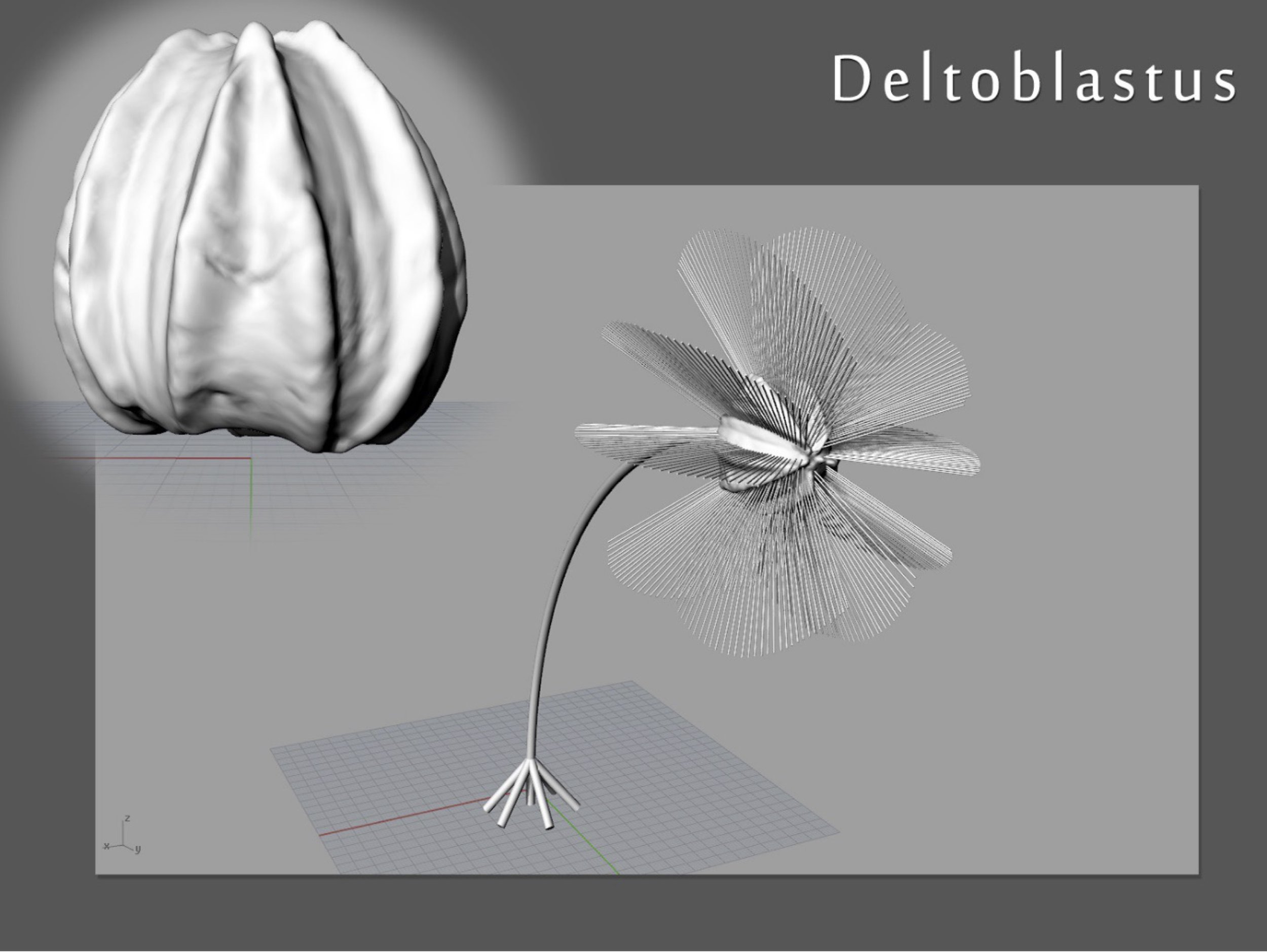Hydrodynamic Modeling of Blastoid feeding
Having studied blastoids for more than 50 years, I became interested in trying to understand them as living organisms rather than just fossils. In life, (most) blastoids had a stem and relatively long hair-like brachioles, which they used to capture plankton suspended in the water current.
A few blastoids are preserved with stem and brachioles preserved, but most are not. However, we can use software to reconstruct blastoids as living creatures to understand how they fed in different current conditions.
Bonnie Nyugen was my research assistant for three years working on this problem. To recreate a feeding blastoid, Bonnie first took an actual fossil theca(Deltoblastus from Timor in this case) and scanned it with a laser scanner.
The scanned fossil is converted to a 3D model and a stem and brachioles are added. We estimated the stem length, but could actually count the number of brachioles the scanned individual originally had. The specimen is oriented into feeding postion with the stem curved with the water current. Because blastoids had MCT (mutable collagenous tissue) we modeled the brachioles in a rigid feeding position
The model can be loaded into hydrodynamic modeling software to understand water flow around the blastoid in feeding position. The current is flowing from left to right and the water velocity is shown in various colors (red = fastest; blue = slowest) relative to the initial velocity (in this case 2 cm/sec).
We can model the water flow around the blastoid in different current velocities, in this case from 0.5 cm/sec to 50 cm/sec…
… and compare the velocity profiles for the different initial current settings.



